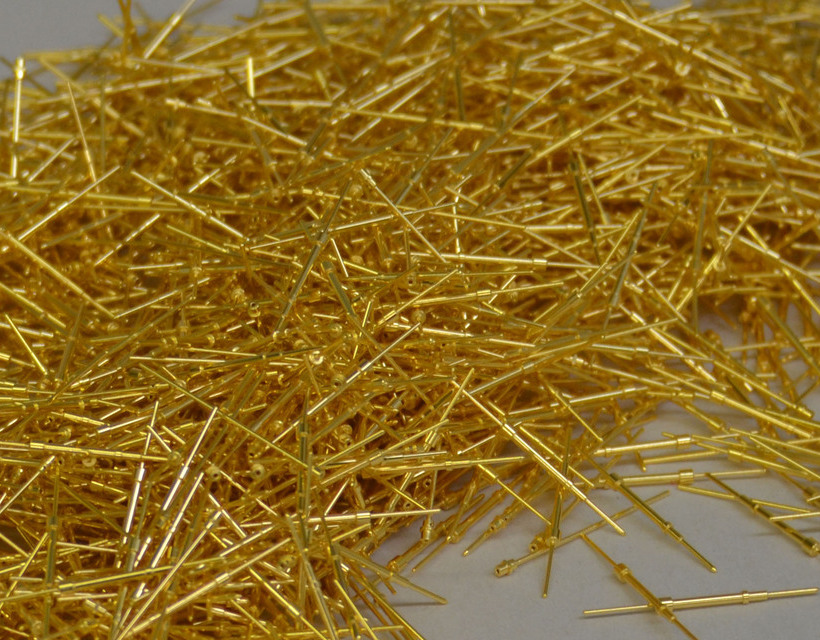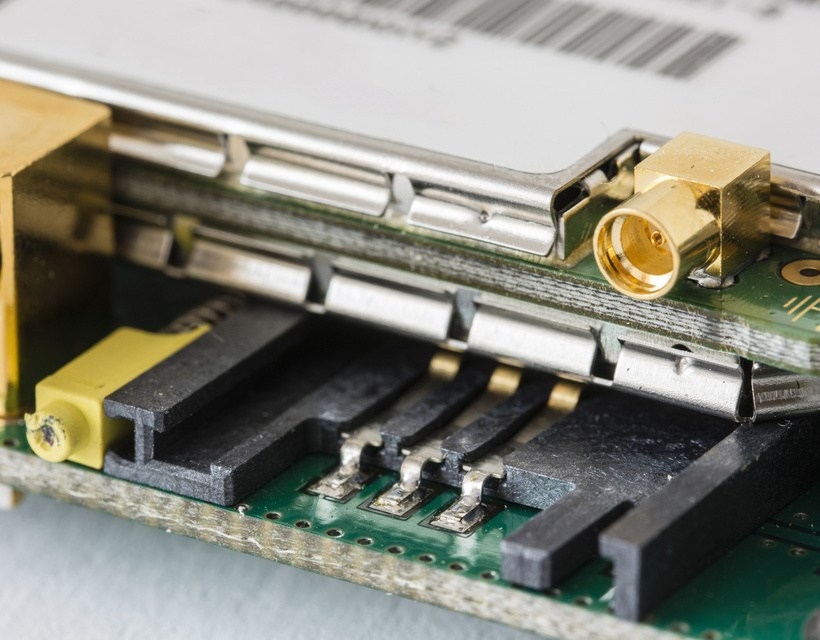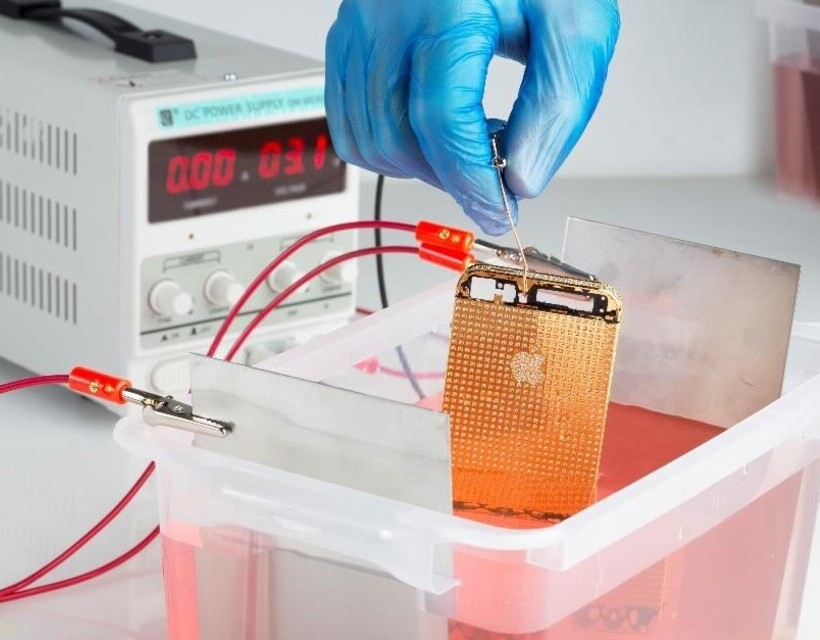We've all heard of gold plating, but did you know it's used in the defense industry? Gold plating is an electroplating process that coats a base metal with a layer of gold.
It's used to enhance surface hardness and wear resistance in the defense industry, and it has many advantages. In this article, we'll explore the advantages and process of gold plating, as well as its environmental impact and regulations.
We'll also look at some examples of gold plating in the defense industry and discuss its alternatives. So, let's dive in and find out more about gold plating in the defense industry.
Overview of Gold Plating

Let's dive into the world of plating and see how it can help improve the longevity of materials!
Gold plating is a process that uses an electrolytic method to coat a metal surface with a thin layer of gold. This layer can be applied to a variety of materials, including steel and aluminum to create a hard, wear-resistant surface that can be used in various industries, including the defense industry.
The gold plating process requires a gold anode and a metal surface that must be thoroughly cleaned and prepped before the gold is applied. The gold is then applied to the metal surface in a uniform, even layer.
This layer provides protection against wear and tear, as well as corrosion and oxidation. Gold plating is a great way to improve the longevity of materials, as the gold layer can be reapplied multiple times, ensuring the material is always in top condition.
Advantages of Gold Plating
You'll appreciate the benefits of gold plating - from improved sturdiness and longevity, to an aesthetically pleasing sheen - with just a single glance!
Gold plating is a great choice for defense industry applications because it provides:
- Enhanced hardness and wear resistance
- Corrosion resistance
- Easy adhesion to various substrates
- Improved electrical conductivity
- An aesthetically pleasing finish
Gold plating also offers a cost-effective way to protect metal surfaces from wear and tear, making it an ideal choice for many defense industry applications.
Additionally, gold plating can be used to provide a decorative finish to metal surfaces and can even be used to replace more expensive precious metals, such as platinum and silver.
Gold plating is also a great choice for components that will be exposed to harsh conditions, as the plating helps to protect the underlying metal from corrosion.
Finally, gold plating can help to reduce the amount of friction on metal surfaces, providing improved efficiency and reliability.
Gold Plating in the Defense Industry

Gain unparalleled protection for your defense industry components with gold plating, and enjoy improved efficiency and reliability with its friction-reducing qualities! Gold plating provides superior wear resistance for the parts used in the defense industry, making them last longer and protect the components from corrosion.
Gold plating also has superior electrical properties, making it ideal for communications and computer components. It's also a great conductor of heat, which makes it perfect for thermal management solutions. Gold plating also offers improved hardness and strength, which is key for components used in the defense industry.
Overall, gold plating provides an efficient, reliable, and cost-effective solution for components used in the defense industry. The gold plating process is also relatively quick, allowing for faster turnaround times and reduced costs. Additionally, gold plating is easy to apply and offers excellent adhesion to the components, ensuring they last longer and perform better.
Finally, gold plating is non-toxic and safe to handle, making it a great option for components used in the defense industry. With gold plating, you can be sure that your defense industry components are protected and operating at peak performance.
Types of Gold Plating
With gold plating, you can be confident that your defense industry components will be fortified to their highest potential, providing maximum protection and durability.
There are several types of gold plating that can be used for defense applications, including:
- Electroplated gold, which is applied through electrolytic deposition and is an economical way to plate small parts
- Hard gold plating, which provides superior wear resistance and a more uniform surface finish
- Soft gold plating, which is designed to prevent corrosion and maximize electrical conductivity
Each of these gold plating options has its own benefits and drawbacks, and the type of plating chosen will depend on the application.
In addition, the plating process can be customized to meet specific requirements, such as the thickness, surface finish, and aesthetic appeal of the plated part.
No matter what type of gold plating is chosen, defense industry components can be fortified to their highest potential, providing maximum protection and durability.
The Process of Gold Plating

The process of gold plating can be intricate, but the end result is well worth it - you can't put a price on protection!
First, the item to be gold plated must be properly prepared and cleaned. This is done by using specific chemical solutions and gentle scrubbing to ensure the surface is free of dirt, grease, oil, and other impurities.
After the surface is prepped, a thin layer of nickel is applied. This layer of nickel helps the gold adhere to the item and also improves the durability and longevity of the plated object.
Once the nickel layer is in place, the gold is then applied. This is usually done by electroplating, a process where an electric current is passed through the item and gold ions are deposited onto the surface.
The final step is to seal the gold to the metal surface, so it doesn’t wear off or tarnish. This is done by buffing the gold-plated item and applying a protective coating.
After the process is complete, the item has a superior hardness, wear resistance, and a beautiful, long-lasting shine that's perfect for use in the defense industry.
Potential Issues with Gold Plating
Although gold plating can provide impressive protection, there are some potential issues that should be considered before investing in the process.
One of these issues is the cost of the process. Gold plating requires special equipment and chemicals which can make it much more expensive than other methods of surface protection. Additionally, the process is time-consuming and labor intensive, which can add to the cost of the project.
Furthermore, the plating can wear off over time, requiring the application of a new layer of gold. This can be costly and time-consuming, so it's important to consider the longevity of the plating when choosing this method.
Another potential issue with gold plating is its environmental impact. The chemicals used in the plating process can be hazardous, and they must be handled and disposed of properly in order to avoid contamination. Additionally, the process can create waste products that must be disposed of in accordance with local regulations.
Therefore, it's important to consider the environmental impact of the process before investing in gold plating.
The Cost of Gold Plating
You'll want to factor in the cost of gold plating, as it can be quite expensive and labor-intensive.
The cost of gold plating depends on the size, shape, and complexity of the part that needs to be plated, as well as the quality of the plating desired. For example, if the part is large and intricate, the price of gold plating could be higher.
Additionally, the amount of gold used in the plating will also affect the price. Generally, the higher the thickness of the gold layer, the more expensive the gold plating will be.
Another factor that can affect the cost of gold plating is the complexity of the process itself. If the surface to be plated is complicated, the process can become extremely labor-intensive and time-consuming, adding to the cost of gold plating.
On the other hand, if the surface is simple, the plating process can be completed much more quickly, resulting in a lower cost.
All in all, when considering gold plating for your project, it's important to factor in the cost of the process, as it can range from being relatively inexpensive to quite costly.
Environmental Impact of Gold Plating
Gold plating can have an environmental impact, and it's important to consider this when making decisions about how to use it.
Plating processes such as gold plating generate hazardous waste, which can be difficult to dispose of safely and responsibly. Gold plating also uses harsh chemicals, such as nitric acid, that can be hazardous to the environment if not handled properly.
Additionally, gold plating requires water to rinse off the chemicals and to cool down the parts. This can lead to wastewater contamination if the water is not properly treated. In addition, plating processes produce hazardous fumes, which can lead to air pollution.
Furthermore, the use of gold plating can lead to an increase in energy consumption, as the process requires a large amount of electricity in order to power the plating machine. This can lead to a higher carbon footprint, as well as an increase in energy costs for the company.
For these reasons, it is important to consider the environmental impact of gold plating before making decisions about its use. Companies should work to reduce the environmental impacts of gold plating by using more efficient processes and materials, and by making sure that all waste is disposed of properly.
Regulations and Standards for Gold Plating
Regulations and standards for gold plating are in place across many industries to ensure its safe and responsible use. In fact, the US Department of Defense alone has over 200 standards for the process. The purpose of these regulations and standards is to ensure that the gold plating process is conducted in a safe and responsible manner, that environmental standards are met, and that the materials and end products are of a high quality.
The regulations and standards for gold plating are numerous and stringent. They cover a wide range of topics, such as proper ventilation and safety procedures during the plating process, proper disposal and recycling of chemicals used in the process, and meticulous quality control standards to ensure that the gold plating job is done correctly.
These regulations and standards are in place to protect the safety of those involved in the gold plating process, as well as to ensure that the end product meets the highest standards. Gold plating is an important process in many industries, and it's essential that these regulations and standards are adhered to in order to ensure the safety and quality of the final product.
Examples of Gold Plating in the Defense Industry

In the defense industry, gold plating can be used to add a layer of protection and capability, not only increasing the surface hardness and wear resistance, but also enhancing the life of components.
For example, gold plating can be used on aircraft components, such as hydraulic systems, to reduce the risk of corrosion, while also increasing their overall durability. It can also be used on weapons to increase their accuracy and improve their performance. Additionally, gold plating can be used on tanks, armored vehicles, and other military vehicles to increase their protection against corrosion and wear. By using gold plating, the military can ensure that their equipment is able to withstand the most extreme conditions.
Gold plating can also be used to increase the efficiency of electrical systems, by reducing the amount of electrical interference between components. This can be beneficial for communications systems, navigation systems, and other electronic systems used in the defense industry.
Furthermore, gold plating can also be used to improve the performance of missiles and other weapons, by increasing their speed and accuracy. In addition to enhancing their performance, gold plating can also reduce their weight, making them more agile and easier to transport.
All of these examples demonstrate how gold plating can be used to enhance the performance and life of components in the defense industry.
Alternatives to Gold Plating
You may have heard of gold plating, but there are other options available to improve the performance and life of components in the defense industry.
For example, an anachronistic solution such as galvanizing can be used to protect against corrosion and wear. Galvanization involves coating the surface with a layer of zinc, which acts as a barrier against the elements by preventing oxidation and providing a strong base for other coatings.
Another option is to use hard chrome plating, which adds a layer of chromium to the surface of the component. This layer is very hard, providing excellent wear and corrosion protection as well as good electrical and thermal conductivity. It is a popular choice for components that are subject to extreme temperatures and corrosive environments.
Additionally, other materials such as titanium, aluminum, and copper can be used to provide a layer of protection and increase the life of components.
No matter which option is chosen, it's important that the application and maintenance procedures are followed to ensure the best performance and longevity of the component.
Conclusion
We've seen why gold plating is such a popular choice for the defense industry. Not only does it offer enhanced surface hardness and wear resistance, it also meets the stringent regulations and standards set forth by the government. Plus, it's an environmentally friendly option that is relatively easy to implement.
At the end of the day, gold plating is an invaluable tool that has helped the defense industry reach new heights. It's hard to imagine what our world would be like without the strength and durability that gold plating brings.
To put it simply, gold plating is like a knight in shining armor for the defense industry, keeping it safe and sound.
